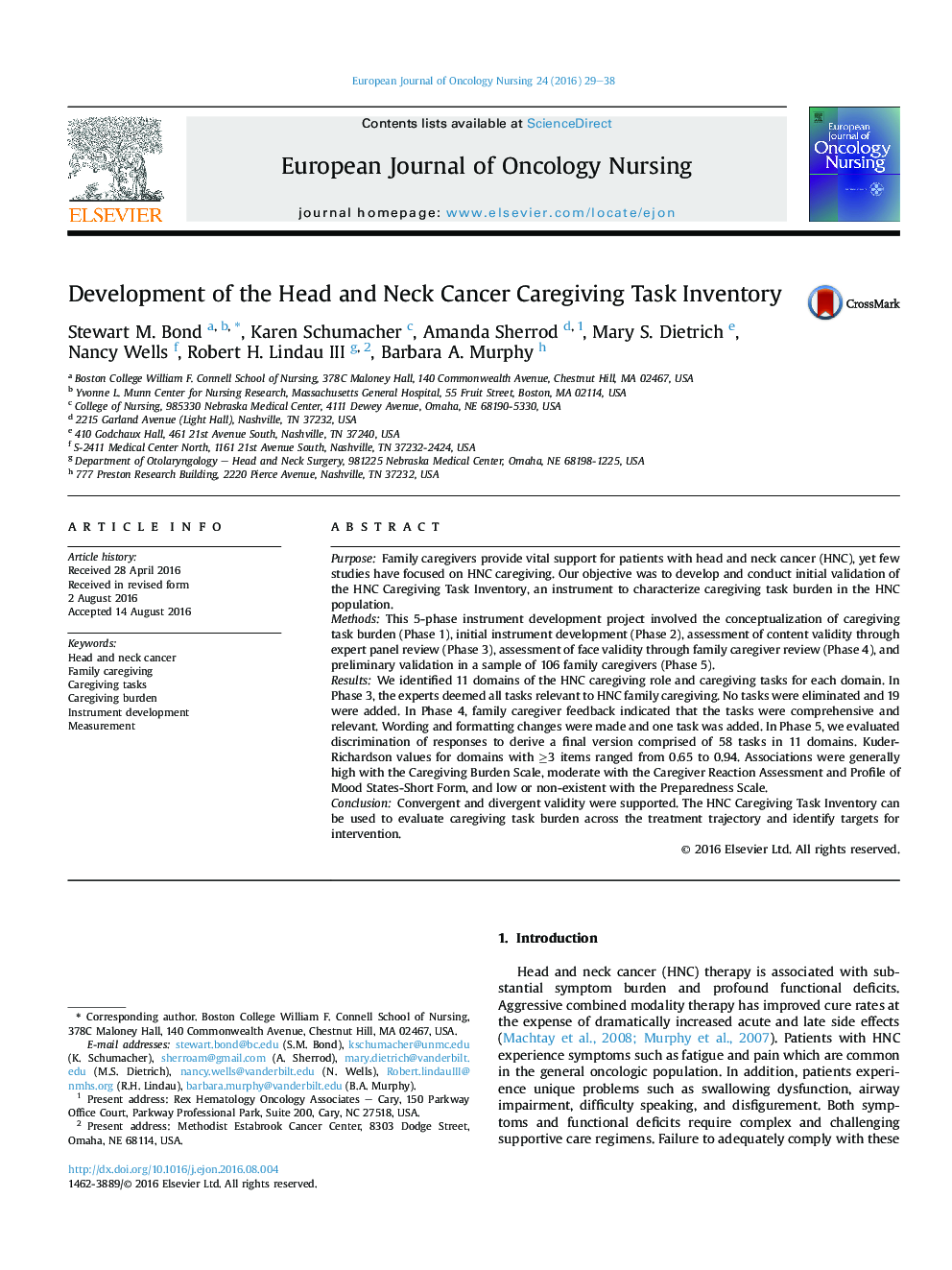| Article ID | Journal | Published Year | Pages | File Type |
|---|---|---|---|---|
| 2649261 | European Journal of Oncology Nursing | 2016 | 10 Pages |
•Head and neck cancer (HNC) poses significant challenges for family caregivers.•Family caregiving in HNC is understudied.•We developed a new instrument, the HNC Caregiving Task Inventory.•Validity of the HNC Caregiving Task Inventory was supported.•The HNC Caregiving Task Inventory can characterize and evaluate caregiving task burden in HNC family caregivers.
PurposeFamily caregivers provide vital support for patients with head and neck cancer (HNC), yet few studies have focused on HNC caregiving. Our objective was to develop and conduct initial validation of the HNC Caregiving Task Inventory, an instrument to characterize caregiving task burden in the HNC population.MethodsThis 5-phase instrument development project involved the conceptualization of caregiving task burden (Phase 1), initial instrument development (Phase 2), assessment of content validity through expert panel review (Phase 3), assessment of face validity through family caregiver review (Phase 4), and preliminary validation in a sample of 106 family caregivers (Phase 5).ResultsWe identified 11 domains of the HNC caregiving role and caregiving tasks for each domain. In Phase 3, the experts deemed all tasks relevant to HNC family caregiving. No tasks were eliminated and 19 were added. In Phase 4, family caregiver feedback indicated that the tasks were comprehensive and relevant. Wording and formatting changes were made and one task was added. In Phase 5, we evaluated discrimination of responses to derive a final version comprised of 58 tasks in 11 domains. Kuder-Richardson values for domains with ≥3 items ranged from 0.65 to 0.94. Associations were generally high with the Caregiving Burden Scale, moderate with the Caregiver Reaction Assessment and Profile of Mood States-Short Form, and low or non-existent with the Preparedness Scale.ConclusionConvergent and divergent validity were supported. The HNC Caregiving Task Inventory can be used to evaluate caregiving task burden across the treatment trajectory and identify targets for intervention.
